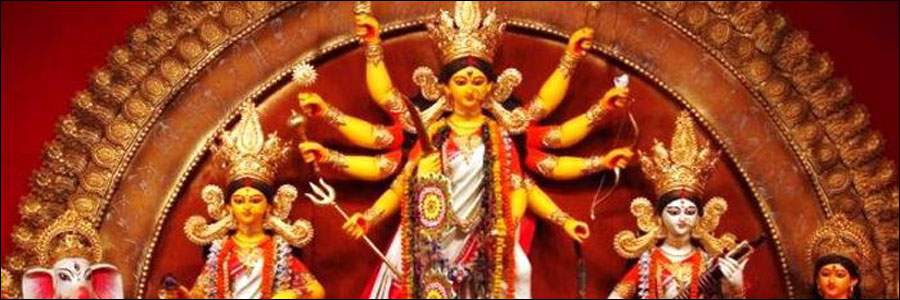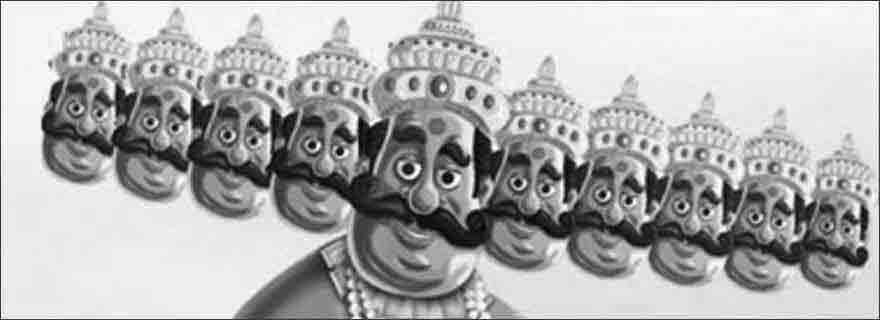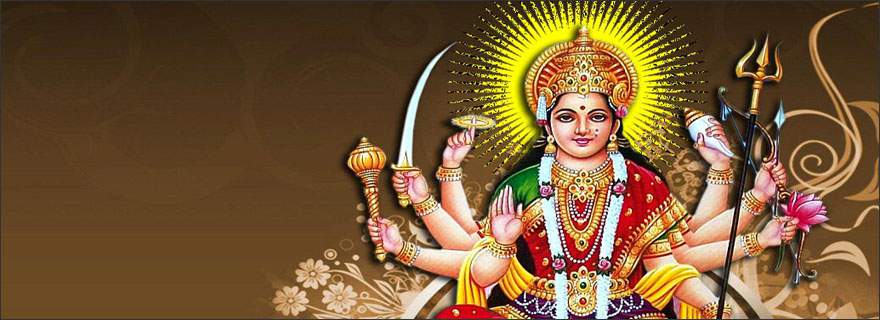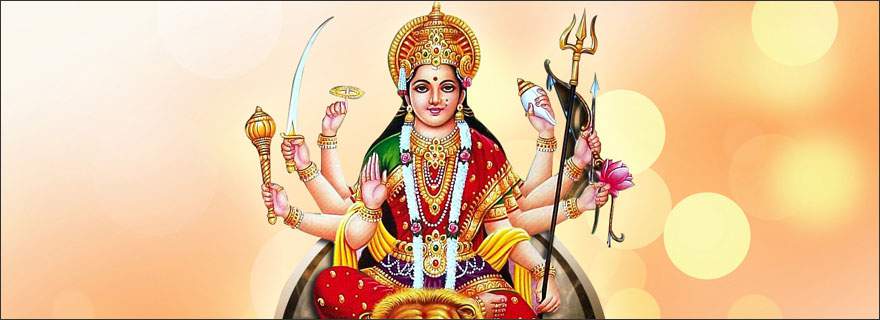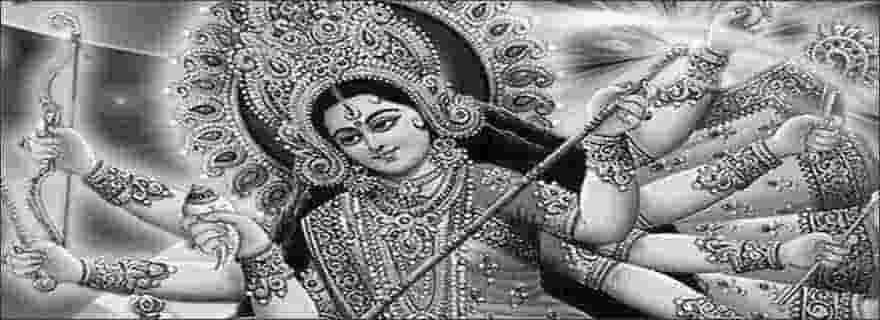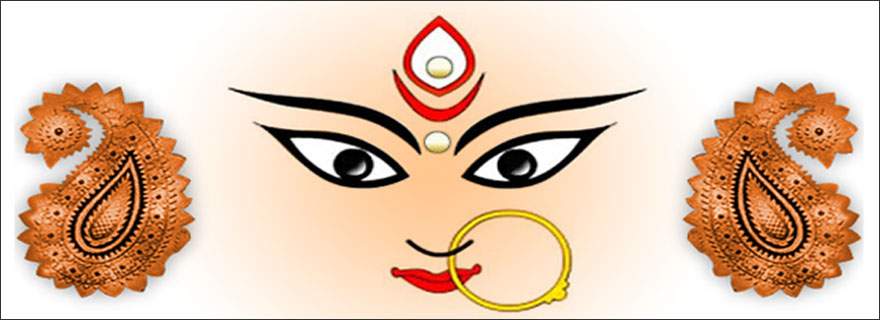All About Durga Puja
Durga Puja – The Cosmic Energy That Animates All Beings, When demonic forces create imbalance all god unite becoming one divine force called Shakti or Durga. Mother of the Universe, she represents the infinite power of the universe and is a symbol of a female dynamism. The manifestation of Goddess Durga is said to emerge from Her formless essence and the two are inseparable. She is also called by many other names, such as Parvati, Ambika, and Kali.
Durga Puja- The Cosmic Energy That Animates All Beings
When demonic forces create imbalance all god unite becoming one divine force called Shakti or Durga. Mother of the Universe, she represents the infinite power of the universe and is a symbol of a female dynamism. The manifestation of Goddess Durga is said to emerge from Her formless essence and the two are inseparable. She is also called by many other names, such as Parvati, Ambika, and Kali.
Remedies During The Navratas For an Early Marriage for Girls
Durga Puja – Destroyer of demons, she is worshiped during an annual festival called Durga puja, especially popular among Bengalis. This is also known as Dussehra and Navratri in other parts of India. Beautifully decorated images of the goddess are worshipped in specially erected Puja Pandals. Community pujas organised in every locality. Families visit each other to share feasts. On the final day the idols are taken in elaborate processions to be immersed in the river or the sea.
There are endless aspects of Durga described in the Puranas and Agamas and the iconography is consequently very varied. She is usually pictured as having ten arms holding Sword, Conch, Discus, Rosary, Bell, Winecup, Shielf, Bow, Arrow, and Spear. She is most often shown riding a lion from which comes Her august name, Simhavahini, “She who stands astride the king of beasts”. She is gorgeously dressed in royal red cloth and has several ornaments decorating Her personage. Her hair is dressed up in a crown (karandamukuta) which then flows out in long luxuriant tresses that are darkly luminous and soothing to the eye. The various tools reflects the eminent supremacy that helps in controlling the universe and obey Her will.
Durga is the Goddess of divine power against all evils.
Though the Goddess is one, She is represented and worshiped in three different aspects. On the first three nights of the festival, Durga is worshiped. On the following three, Lakshmi and then Saraswati Devi on the last three nights. The following tenth day is called Vijayadasami. Vijaya means “victory”, the victory over one’s own minds that can come only when these three: Durga, Lakshmi, and Saraswati are worshiped.
The Durga Puja comes smack in the middle of autumn and even has a term for it – akal bodhan – or the untimely puja. This break with tradition was initiated by the great Hero-god Rama however, and it provided a great deal of justification. Rama was having trouble finishing off the demon-king Ravana and he performed an out of tradition special puja, to get the Power of the Mahadevi on his side.
Another legend goes that Mahisasur, the Buffalo Demon, through years of praying, received blessing from Lord Brahma, that no power can kill him which means he is invincible. But once gaining this power he started ravaging the whole world and killing people. And finally he wanted to uproot the Gods too. The Gods, in dismay, combined their powers to create a beautiful maiden, and each placed his or her most potent weapon in one of her ten hands riding a lion.
Her return in each year in the Bengali month of Aswin (September-October) commemorates Rama’s invocation of the goddess Durga before he went into battle with Ravana. The traditional image of the Bengali Durga follows the iconography injunctions of the Shastras. It is similar to the Durga of Aihole and of Mahabalipuram (seventh century). The tableau of Durga with her four children – Kartik, Ganesh, Saraswati and Lakshmi, representing respectively the Protector, the Initiator of the puja, Knowledge and the Provider – signifies the complete manifestation of the goddess.
The construction of images starts months back. Three expenses are major here. Illumination: Using tiny light bulbs set up in outline form, the electricians manage to convey the illusion of a cricket match being played, or of a plane taking off, or a fountain spurting.
The second is the Pandal which houses the entire set of divine images and provides a space for devotees. It is essentially a bamboo-framework with cloth stretched over it, a tent of sorts.
Finally there are the Images themselves which are nothing but dried clay on a straw and wood skeleton and then painted over to look human. The complete image of Goddess Durga represent destruction of evil and protection of good and reflects the point that in order to become divine one should keep one’s animal instincts under control. Thus, by worshiping Durga the idea of ruthless destruction is invoked to annihilate all the desires and unfold divinity.
For the three and a half days the festival lasts, during these three days, night and day are inverted. Schools, colleges, offices remain closed during these three days even the newspapers have a holiday, New music albums too are timed to launch with the puja fever. Trains to tourists’ spots get reserved months before puja. Bengalis in other cities in India visit their relatives in West Bengal.
People sleep during the day and at night they come out in the millions, no exaggeration, and wander from pandal to pandal, praying to the Image of the Divine Mother. A great many people cover the entire city on foot in those three days. It is one great peal of Joy, and the stern rules about late nights and intermingling of young people are relaxed for the nonce. People are in their year’s best finery and everybody is determined to have a good time. Families visit with a vengeance and an energy that is truly breathtaking.
The religious aspect is rigorously maintained in a daily schedule of many minor and major services.. After the three days of Puja, in Dashami, in the last day, a tearful farewell is offered to the Goddess. Most of the community pujas postpone the farewell as long as possible and arrange a grand send-off. The images are carried in processions around the locality and finally are immersed in a nearby river or lake. Vijaya Dashami is an event celebrated all over the country. Once the Puja and immersion is over the city literally lapses into gloom for while. However there is always next year to look forward to.
This ceremony recreates that divine act of transcendence, as well as delivers a valuable lesson on the impermanence of all things no matter how beautiful and dear to ones heart.
Article by Malini Gupta

